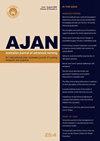对西澳大利亚国家卫生服务医院收治的患者的肥胖数据和诊断编码的一致性进行审计
IF 1.3
4区 医学
Q3 NURSING
引用次数: 3
摘要
目的:准确的患者肥胖数据可用于识别和减轻患者手动处理给医护人员带来的风险。本研究调查了西澳大利亚国家卫生服务中心(WACHS)患者肥胖数据的准确性,并研究了影响肥胖数据准确性的潜在因素。背景:由于患者肥胖的增加,医护人员受伤的风险正在增加。自1995年以来,澳大利亚的肥胖患病率持续上升,澳大利亚的肥胖预测预测,到2035年,42%的人口将肥胖。为了管理因肥胖患者管理而增加的医疗工作者受伤风险,需要与患者肥胖相关的准确医疗数据。设计:研究人员检查了WACHS医院收治的II型糖尿病患者的记录,II型糖尿病已证实与肥胖有关。对患者病历和电子患者入院数据中的肥胖相关数据进行人工数据提取和比较,以确定准确性。结果:患者资料检查分析显示,当记录体重和身高时,体重(67%)、身高(24%)和身体质量指数(BMI)记录不佳(10%)。低敏感性结果(40%)、高假阴性结果(60%)和0.44的Cohen’s kappa值也决定了较差的肥胖数据准确性。讨论:敏感性结果表明,当医疗档案中记录肥胖时,只有40%的肥胖患者被编码为肥胖,假阴性结果表明,在医疗档案中存在肥胖标记的地方,60%的这些病例被错误地编码为“正常加权”。编码肥胖的发生率与医学档案中记录的肥胖患者的记录之间只有适度的一致。结论:需要进一步的研究来提高肥胖记录和编码的准确性,这将增加可靠的肥胖数据的收集,可用于降低护士和其他医护人员处理肥胖患者的风险。关于这个话题我们已经知道了什么?澳大利亚人口肥胖率不断上升,这一增长与越来越多的肥胖患者被送入医院相对应。护理肥胖患者的医护人员在进行患者处理任务时受伤的风险增加。补充说明:使用了一个利用14个数据准确性指标来衡量肥胖准确性的模型,揭示了肥胖数据准确性差和肥胖数据完整性差。肥胖数据的完整性受到以下因素的影响:临床医生的时间需求和工作量、临床记录要求的广度、缺乏对肥胖数据需求的组织指导,以及在获得行动障碍、卧床不起或无法站立的患者的身高测量方面的挑战。完整和准确的肥胖数据收集将提高管理肥胖患者的医疗保健人员的安全风险,并可能提高医疗保健筹资的准确性。本文章由计算机程序翻译,如有差异,请以英文原文为准。
An audit of obesity data and concordance with diagnostic coding for patients admitted to Western Australian Country Health Service hospitals
Objective: Accurate patient obesity data can be used to identify and mitigate patient manual handling risks to healthcare staff. This study investigates the accuracy of patient obesity data within the Western Australian Country Health Service (WACHS) and examines factors potentially affecting obesity data accuracy. Background: Risk of injuries to healthcare staff are increasing due to rising patient obesity. Consistent increases in the prevalence of obesity in Australia have been recorded since 1995 and Australian obesity projections predict that 42% of the population will be obese in 2035. To manage the increased risks of injuries to healthcare workers due to obese patient management, accurate healthcare data relating to patient obesity is required. Design: Researchers examined records of patients admitted to WACHS hospitals with Type II Diabetes, which has confirmed links with obesity. Manual data extraction and comparison of obesity related data within patient medical records and electronic patient admission data was conducted to determine accuracy. Results: Analysis of the patient data examination demonstrated poor recording of weight (67%), height (24%) and Body Mass Index (BMI) when weight and height measurements were recorded (10%). Poor obesity data accuracy was also determined by low sensitivity results (40%), high false negative results (60%) and a Cohen’s kappa value of 0.44. Discussion: The sensitivity result demonstrates that only 40% of obese patients were coded as obese when obesity is recorded in their medical files, and the false negative result demonstrates that where obesity notations were present in medical files, 60% of these cases were incorrectly coded as ‘normal weighted’. There was only moderate agreement between the occurrences of coded obesity and the recorded obese patient notations in the medical files. Conclusion: Further research is required to inform enhancements to improve obesity recording and coding accuracy, which will increase the collection of reliable obesity data that could be used to reduce obese patient handling risks to nurses and other healthcare staff.
What is already known about the topic?
Increasing Australian population obesity rates have been previously demonstrated, this increase corresponds with increasing numbers of obese patients being admitted into hospitals.
Healthcare staff who care for obese patients are at increased risk of injuries when conducting patient handling tasks.
What this paper adds:
A model to measure obesity accuracy utilising 14 data accuracy indicators was used, revealing poor obesity data accuracy and poor completeness of obesity data.
Completeness of obesity data is influenced by time demands and workload of clinicians, breadth of clinical recording requirements, lack of organisational direction for the need of obesity data, and challenges in obtaining height measurements of patients who are mobility impaired, bed-ridden or unable to stand.
Complete and accurate obesity data collections will result in increased ability to mitigate safety risks to healthcare staff who manage obese patients and may improve healthcare funding accuracy.
求助全文
通过发布文献求助,成功后即可免费获取论文全文。
去求助
来源期刊
CiteScore
2.30
自引率
7.10%
发文量
27
审稿时长
>12 weeks
期刊介绍:
The Australian Journal of Advanced Nursing publishes a wide variety of original research, review articles, practice guidelines, and commentary relevant to nursing and midwifery practice, health- maternity- and aged- care delivery, public health, healthcare policy and funding, nursing and midwifery education, regulation, management, economics, ethics, and research methodology. Further, the journal publishes personal narratives that convey the art and spirit of nursing and midwifery.
As the official peer-reviewed journal of the ANMF, AJAN is dedicated to publishing and showcasing scholarly material of principal relevance to national nursing and midwifery professional, clinical, research, education, management, and policy audiences. Beyond AJAN’s primarily national focus, manuscripts with regional and international scope are also welcome where their contribution to knowledge and debate on key issues for nursing, midwifery, and healthcare more broadly are significant.

 求助内容:
求助内容: 应助结果提醒方式:
应助结果提醒方式:


